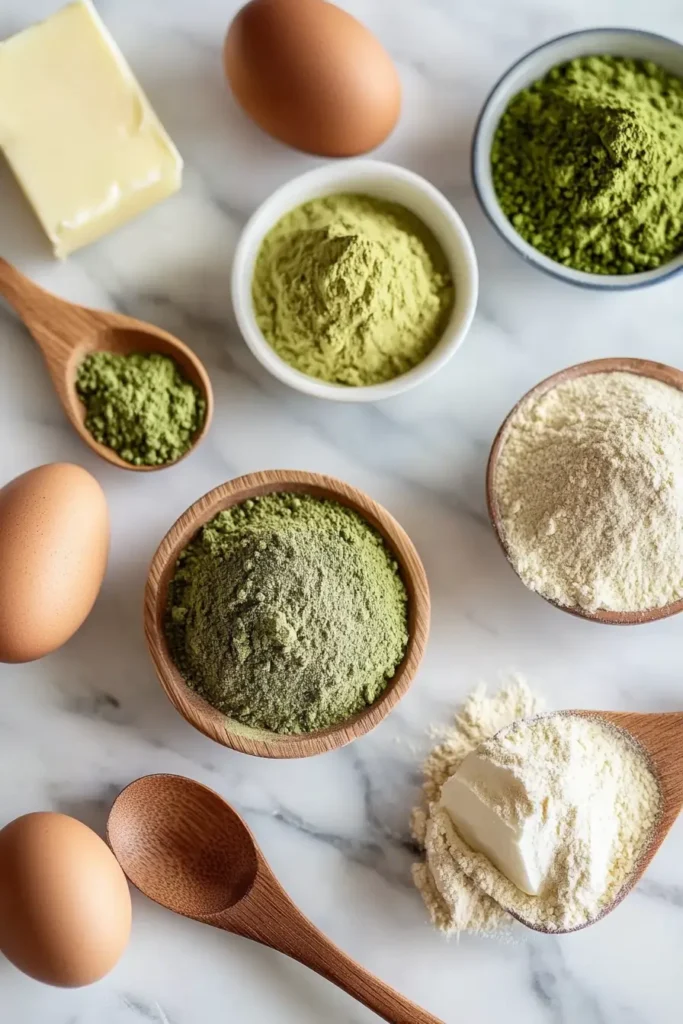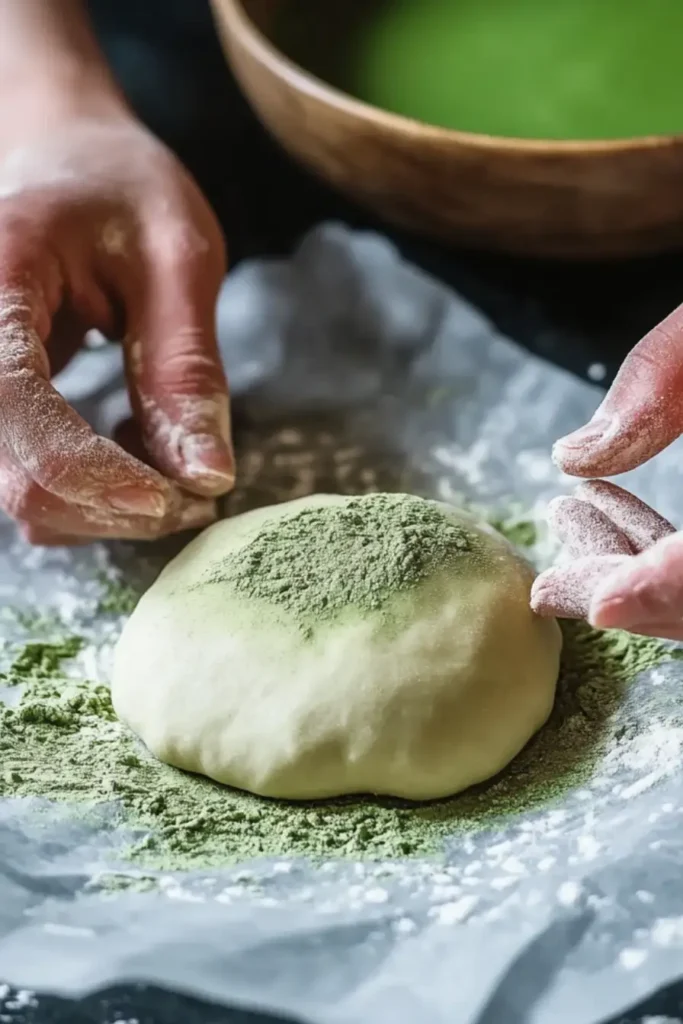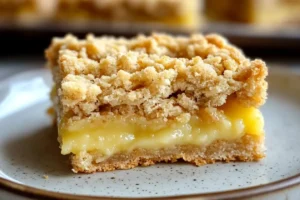Matcha Pan: Matcha lovers, rejoice! If you’re a fan of fluffy, slightly sweet, and vibrant green bread, then Matcha Pan is something you need to try. This unique Japanese bread incorporates matcha powder, a finely ground green tea rich in antioxidants and flavor, into various types of bread, from soft milk bread to crispy melon pan.
But what makes Matcha Pan special? Is it just the color, or does matcha actually enhance the taste and nutritional value of bread? In this article, we’ll explore everything about this delightful fusion of Japanese baking and green tea, from its origins and health benefits to homemade recipes and serving ideas. Whether you want to bake it yourself or find the best bakeries that sell it, this guide has you covered.
What is Matcha Pan?
Japanese baking has a reputation for producing some of the world’s softest, fluffiest, and most visually appealing bread. Matcha Pan is no exception. Infused with the earthy bitterness of matcha and often combined with sweet and creamy fillings, it offers a balance of flavors that both bread and tea enthusiasts can appreciate.
Origins of Matcha Pan
The fusion of matcha and bread is a relatively modern concept, but both ingredients have deep roots in Japanese culinary traditions. Matcha, a finely powdered green tea, has been a staple in Japanese culture for centuries, mainly used in tea ceremonies and traditional sweets (wagashi). Over time, bakers began experimenting with matcha-infused bread, creating unique variations like matcha melon pan, matcha shokupan, and matcha steamed cake.
How It Differs from Other Japanese Breads
Japanese breads are known for their pillowy texture and slightly sweet flavor. But what makes Matcha Pan stand out?
- Flavor: The addition of matcha powder gives the bread an earthy, slightly bitter note, which contrasts beautifully with its soft and lightly sweet dough.
- Color: Unlike traditional shokupan (milk bread) or melon pan, matcha versions have a distinct green hue that makes them visually striking.
- Texture: Depending on the type, Matcha Pan can be soft and chewy (like shokupan) or crisp and cookie-like (as seen in matcha melon pan).
Why Matcha is a Popular Ingredient in Baking
Matcha isn’t just about looks—it adds depth to baked goods and provides several benefits:
- Rich in antioxidants – Matcha is packed with catechins, powerful compounds known for their health benefits.
- Naturally boosts energy – Unlike coffee, matcha provides a more stable, jitter-free energy boost due to its L-theanine content.
- Enhances flavor – The slightly bitter, umami-rich taste of matcha balances the sweetness in baked goods, creating a more complex and enjoyable flavor profile.
With these qualities, it’s no wonder Matcha Pan has become a favorite among both bakers and matcha enthusiasts.
Looking for a sweet and fruity treat? Try this moist and flavorful Peach Bread recipe!
The Different Types of Matcha Pan
Not all Matcha Pan is created equal. Depending on the recipe and baking technique, this green tea-infused bread comes in several delicious variations. While some versions are light and fluffy, others have a crisp outer layer that adds texture. Let’s explore the most popular types of matcha-infused bread and what makes each one unique.
Matcha Melon Pan: A Sweet and Crunchy Delight
One of the most well-known variations is Matcha Melon Pan. Despite its name, this bread contains no melon. Instead, the name comes from its cracked, cookie-like crust, which resembles the surface of a melon.
This version of Matcha Pan consists of a soft, fluffy bread base coated with a sweet and crunchy biscuit layer. The dough is often enriched with butter and milk, giving it a tender crumb. The top layer, made from sugar, flour, and matcha, bakes into a crisp shell that contrasts beautifully with the soft bread underneath.
Many bakeries offer Matcha Melon Pan with fillings such as sweetened red bean paste (anko) or matcha-flavored custard. These fillings enhance the flavor by adding creaminess and a slight sweetness, balancing matcha’s natural bitterness.
Matcha Shokupan: The Soft and Fluffy Milk Bread
For those who prefer a softer texture, Matcha Shokupan is the perfect choice. Shokupan (Japanese milk bread) is known for its pillowy-soft texture and slightly sweet taste, making it ideal for sandwiches or toast.
What makes Matcha Shokupan special? The dough contains milk, butter, and honey, creating a light yet rich bread. Adding matcha powder gives it a vibrant green color and a subtle earthy taste. Unlike Matcha Melon Pan, which has a crunchy exterior, shokupan remains soft and fluffy throughout.
Some bakeries sell Matcha Shokupan with swirls of red bean paste or white chocolate for added sweetness. Others incorporate matcha and black sesame for a nutty twist. Whether toasted with butter or used in Japanese-style sandwiches, this bread is a versatile way to enjoy matcha in baking.
Matcha Steamed Cake: A Lighter Alternative
For those looking for something softer and less dense, Matcha Steamed Cake is an excellent alternative. Instead of being baked, this bread-like cake is steamed, resulting in a light, airy texture. It’s slightly chewy, moist, and naturally sweet, making it perfect for breakfast or as an afternoon treat.
Unlike Matcha Melon Pan or Matcha Shokupan, this steamed version is often made without butter or eggs, making it a good option for those following a dairy-free or vegan diet. The matcha flavor shines through, creating a delicate balance of sweet and slightly bitter notes.
This type of Matcha Pan pairs well with a drizzle of honey, a dusting of powdered sugar, or even a scoop of vanilla ice cream. Its fluffy texture and mild sweetness make it an easy, guilt-free way to enjoy matcha in a different form.
Transport yourself to the tropics with this delicious Hawaiian Banana Bread recipe—sweet, moist, and packed with island flavors!
Health Benefits of Matcha in Bread
Besides its delicious flavor, Matcha Pan offers a range of health benefits, thanks to the powerful nutrients found in matcha. Unlike regular bread, matcha-infused bread provides antioxidants, natural energy, and metabolism-boosting compounds.
Rich in Antioxidants and Catechins
Matcha is known for its high antioxidant content, particularly catechins, which help protect cells from damage. These antioxidants may:
- Support heart health by reducing bad cholesterol levels
- Improve brain function by protecting neurons from oxidative stress
- Boost the immune system by fighting off free radicals
Because matcha is mixed directly into the dough, Matcha Pan allows you to enjoy these health benefits with every bite. The antioxidants remain intact during baking, so you’re still getting the nutrient-rich properties of green tea.
Boosts Energy and Metabolism Naturally
Unlike coffee, which can cause energy crashes, matcha provides a steady release of energy throughout the day. This is due to L-theanine, an amino acid found in matcha that promotes calm alertness.
Eating Matcha Pan in the morning can give you a natural energy boost without the jitters. Plus, matcha has been linked to increased fat burning and enhanced metabolism, making it a great addition to a balanced diet.
How Matcha Enhances the Nutritional Value of Bread
Many traditional breads lack essential nutrients, but Matcha Pan changes that. Adding matcha to bread dough enhances its nutritional profile, providing:
- Vitamin C – Supports the immune system and promotes healthy skin
- Chlorophyll – A natural detoxifier that helps remove toxins from the body
- Fiber – Helps digestion and keeps you feeling full longer
By choosing Matcha Pan over regular white bread, you’re not only enjoying a flavorful, unique treat but also reaping the health benefits of matcha in every slice.
How to Make Matcha Pan at Home
Making Matcha Pan at home is easier than you might think. With a few simple ingredients and some patience, you can create soft, fluffy, and flavorful green tea-infused bread right in your own kitchen.
Essential Ingredients for the Perfect Matcha Bread

To achieve the best texture and flavor, you’ll need:
- Bread flour – Gives the dough structure and chewiness.
- Matcha powder – Use high-quality ceremonial or culinary-grade matcha for vibrant color and rich flavor.
- Sugar – Adds sweetness and balances matcha’s natural bitterness.
- Milk and butter – Essential for a soft, fluffy texture.
- Yeast – Helps the dough rise and develop a light structure.
- Salt – Enhances the overall flavor.
For fillings, you can use:
- Sweet red bean paste (anko) – A traditional Japanese filling.
- Matcha custard or cream – Adds extra green tea flavor.
- White chocolate chips – A sweet contrast to matcha’s slight bitterness.
Step-by-Step Recipe for Matcha Pan
1. Prepare the Dough
- In a bowl, mix warm milk, sugar, and yeast. Let it sit for 5 minutes until foamy.
- Add matcha powder, bread flour, salt, and softened butter. Knead the dough for 10–15 minutes until smooth.
2. First Rise
- Place the dough in a greased bowl, cover it, and let it rise for 60–90 minutes until doubled in size.
3. Shape the Bread
- Punch down the dough and divide it into equal portions.
- Shape into balls or flatten slightly for a more traditional melon pan look.
4. Second Rise
- Arrange the dough balls on a baking sheet, cover, and let them rise for another 30–45 minutes.
5. Bake to Perfection
- Preheat the oven to 350°F (175°C).
- Bake for 12–15 minutes or until golden brown on the outside.
Once out of the oven, let them cool slightly before enjoying. For a finishing touch, dust the tops with extra matcha powder or powdered sugar.

Tips for Achieving the Best Texture and Flavor
- Use fresh matcha powder – Old or low-quality matcha may lose its flavor and color.
- Don’t over-knead the dough – Overworking it can make the bread tough instead of soft.
- Store properly – Keep Matcha Pan in an airtight container to maintain freshness for up to 3 days.
Where to Buy Matcha Pan and the Best Brands to Try
If baking at home isn’t an option, you can still enjoy Matcha Pan from top bakeries and online stores.
Top Bakeries Offering Authentic Matcha Pan
Several bakeries specialize in Japanese-style bread, and many offer Matcha Pan as part of their lineup. Some highly rated spots include:
- Kimuraya (Tokyo, Japan) – One of the oldest Japanese bakeries known for its traditional bread.
- Panya Bakery (New York, USA) – Offers fresh Matcha Shokupan with a soft, fluffy texture.
- Yamazaki Bakery (Worldwide) – A well-known chain producing high-quality matcha-flavored breads.
If you live in an area with a Japanese bakery, it’s worth checking if they offer Matcha Pan in different varieties.
Buying Matcha Bread Online: What to Look For
If you prefer convenience, online stores offer Matcha Pan for delivery. When buying online, consider the following:
- Freshness guarantee – Look for bakeries that bake fresh and ship quickly.
- High-quality matcha – Ensure the bread is made with real matcha powder, not just food coloring.
- Customer reviews – Check ratings to find the best-tasting options.
Several online specialty stores, including Japan Crate and YumeTwins, often feature Japanese baked goods, including matcha-flavored treats.
Serving Suggestions and Pairings
Matcha Pan is not just a treat on its own—it pairs beautifully with different drinks and can be used in creative ways to elevate desserts. Whether you prefer a simple snack or an indulgent pairing, there are many ways to enjoy this flavorful green tea bread.
Best Beverages to Enjoy with Matcha Pan
Pairing the right drink with Matcha Pan enhances its flavor, making each bite more enjoyable. Some of the best beverages to complement it include:
- Matcha Latte – A creamy, slightly sweet latte made with matcha powder and steamed milk enhances the earthy notes of the bread.
- Green Tea – A classic pairing, sencha or genmaicha (toasted rice green tea) adds depth without overpowering the matcha flavor.
- Black Coffee – The bitterness of coffee balances the mild sweetness of Matcha Pan, making it a great choice for breakfast.
- Soy or Almond Milk – A dairy-free option that complements matcha’s rich umami taste while keeping the meal light.
For a refreshing summer treat, try Matcha Pan with iced hojicha (roasted green tea) or a fruity Japanese yuzu soda.
Creative Ways to Use Matcha Bread in Desserts
If you want to take your Matcha Pan experience to the next level, try incorporating it into desserts. Its soft texture and mild sweetness make it a perfect base for creative recipes.
- Matcha French Toast – Dip thick slices of Matcha Shokupan in a mix of eggs, milk, and a touch of honey. Fry until golden, then top with whipped cream and fresh berries.
- Matcha Bread Pudding – Cube leftover Matcha Pan, soak it in a custard mixture, and bake for a warm, comforting dessert.
- Ice Cream Sandwiches – Slice Matcha Pan and fill it with vanilla or red bean ice cream for a simple, refreshing treat.
- Tiramisu Twist – Use thin slices of Matcha Pan instead of ladyfingers in a tiramisu for a green tea-infused version of this classic dessert.
Got just two bananas? No problem! This easy Banana Bread recipe makes a perfectly moist and flavorful loaf!
FAQs
Why is Gen Z obsessed with matcha?
Gen Z is drawn to matcha for several reasons. First, it aligns with their focus on health and wellness, as matcha is packed with antioxidants, boosts metabolism, and provides sustained energy without jitters. Unlike traditional coffee, which can cause crashes, matcha offers a smoother caffeine experience, making it appealing to younger generations who prioritize balanced energy levels.
Additionally, matcha is highly Instagrammable—its vibrant green color and aesthetically pleasing lattes fit perfectly into Gen Z’s love for visually appealing, trendy food. Social media influencers and wellness brands have also played a role in popularizing matcha-based drinks, smoothies, and desserts. Plus, as a more sustainable alternative to coffee, matcha aligns with Gen Z’s growing interest in eco-friendly and ethical consumption.
What does drinking matcha do to your body?
Drinking matcha has several health benefits, thanks to its high levels of catechins (antioxidants), L-theanine, and natural caffeine. Some key effects include:
Boosts Energy Without Jitters – Unlike coffee, matcha provides a steady release of caffeine, reducing crashes and anxiety.
Enhances Brain Function – L-theanine in matcha improves focus, memory, and relaxation, making it a great alternative to coffee for mental clarity.
Supports Heart Health – Studies suggest that the antioxidants in matcha help lower cholesterol and blood pressure.
Aids Metabolism & Fat Burning – Matcha has been linked to an increase in fat oxidation, helping with weight management.
Detoxifies the Body – High in chlorophyll, matcha helps remove toxins and supports liver function.
Why is Starbucks matcha different?
Starbucks matcha is different because it contains added sugar and other ingredients. Unlike traditional pure matcha powder, which is made only from ground green tea leaves, Starbucks’ version is a pre-sweetened matcha blend. This means their matcha lattes and other green tea drinks often contain more sugar and fewer antioxidants than high-quality ceremonial or culinary-grade matcha.
Additionally, Starbucks matcha is not whisked in the traditional way. Instead, it’s shaken or blended, which affects the overall texture and taste. While it’s convenient and widely available, Starbucks matcha lacks the authentic, slightly bitter and umami-rich flavor of true Japanese matcha.
Conclusion
Matcha Pan is a delightful fusion of Japanese baking and the rich, earthy flavors of green tea. Whether you enjoy the crispy sweetness of Matcha Melon Pan, the pillowy softness of Matcha Shokupan, or the light and airy texture of Matcha Steamed Cake, there’s a version for everyone.
Beyond its unique taste, Matcha Pan also offers health benefits due to its high antioxidant content and natural energy-boosting properties. You can bake it at home using simple ingredients or find it at specialty bakeries and online stores. Once you have it, the possibilities are endless—pair it with tea or coffee, transform it into a creative dessert, or simply enjoy it on its own.
If you haven’t tried Matcha Pan yet, now is the perfect time to discover this delicious and vibrant green tea bread. Whether you’re a matcha lover or new to Japanese baked goods, this is one treat you won’t want to miss!
Don’t miss out on amazing recipes! Follow butteryrecipes on Pinterest and Facebook today!



